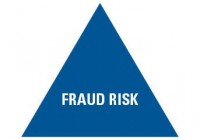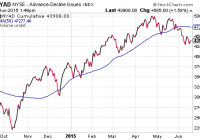Let’s Talk About Corporate Fraud
Summary A study predicts that 14.5% of firms, or one in seven, has insiders engaging in fraudulent behavior. They estimated a median loss of 20.4% of the enterprise value. The math of loss works harshly against investors. Rule #1 is to never lose money; Rule #2 is to refer back to Rule #1. We are all here “Seeking Alpha”, but we also want to avoid mistakes and catastrophe. One of the worst ways to lose money is due to corporate fraud. Some companies die a slow death, which you can argue is somewhat predictable, but what about getting Enron-ed? Isn’t that one of your worst fears as an investor that your stock goes to $0 overnight? When reading Intelligent Investor , one of the main concepts that jumped out to me was that numbers are highly subjective! How are you going to count depreciation, how are revenues going to be recognized, what goes off balance sheet… It depends; do you want earnings to be $900 million, $1.1 billion, or $1.3 billion? There are legal ways of playing the accounting game and illegal ways. One dangerous situation is when the executive team has compensation and bonuses tied to earnings which can be very subjective. Earnings can legally be recorded as $900 million, $1.1 billion or $1.3 billion, but if earnings come in at $1.2 billion or higher, then our CEO and the executive team get a big, fat bonus. Given the three choices, guess which earnings the company will have? That’s totally legal, but let’s take it a step further. What if the board members postulate that earnings of $1.5 billion earns our CEO a bonus? Think some creative accounting teams will take the board’s challenge and make it happen? My argument is that corporate fraud is real and that with the market hitting all-time highs – one or more big corporations are destined to go down. The market is “high”, and when the tide comes down, we will see who was swimming naked. The incentives to cheat are enhanced now, and I’d argue that it’s logical to presume that more fraud is occurring. I also seem to remember a fast-talking President make promises about cleaning up Wall Street, yet I missed the follow through part about anybody actually going to jail. Data It is very difficult to determine how rampant fraud is. How do you even quantify it? The data is not easy to find. I read an interesting study, How Pervasive is Corporate Fraud? by Dyck, Morse, and Zingales. Here are some key takeaways from their excellent study: – Over their time period studied, 4% of large publicly traded firms were eventually revealed to be engaged in fraud. They estimate that only 27.5% of fraud is detected, leading to an estimate that 14.5% of firms, or one in seven, has insiders engaging in fraudulent behavior. – They estimated a median loss of 20.4% of the enterprise value of the fraud companies was lost – measured by the firms’ enterprise value before the fraud took place as a benchmark. This puts a 3% price tag on all the value of all large corporations. – Their study found that on average 14.8% of MBA students were asked to do something illegal in their previous employment. Surprisingly, the incidence of illegal behavior did NOT vary among different industries. The only exception was a lower incidence among consumer goods, only 7% or 1/2 the fraud levels. Contrary to expectations, the financial services industry did NOT experience higher levels of illegal activity. A Forbes article echoed similar findings. “The 347 companies that were prosecuted in the decade that ended in 2007 represent a small fraction of the fraud cases that occurred.” Very few fraud cases resulted in SEC enforcement action; a lot of times the fraud resulted in shareholder disappointment, price drops, bond defaults and insolvency. Here is a top 10 list of the worst corporate accounting fraud. So why do it? The Forbes article cited the most common reasons for fraud being: – Desire to meet earnings expectations. – Hide the company’s deteriorating financial condition. – Bolster performance for pending equity or debt financing. – Increase management compensation. Clues – Frequent amendments to financial filings. – Boards chaired by the CEO. – Discrepancy between annual pay and bonus pay for CEO/CFO. – Large insider selling by top executives. – Frequent legal and regulatory issues. – Frequent turnover for officers. Among firms involved in fraud, 26% changed auditors, between the filing of their final clean financial statement and their final fraudulent financial statement. Sixty percent of the firms involved in fraud that changed auditors did so while the fraud was taking place, the other 40% changed auditors right before the fraud began. Conclusion The math of loss really works against you, the investor. If your company’s stock goes down 50% due to fraud or really any other reason, then you need a 100% return to get back to even. You could do all the due diligence in the world and still get wiped out. If auditors, regulators, insiders, board members and key employees can get duped, then so can John Q. Public the retail investor that doesn’t have access to the same information. There are certain industries that I don’t want to invest in due to their sheer complexity – financials. I like being in control, and corporate fraud takes an element of control away from you. In a ZIRP world, with top-line revenues hurting, companies cut costs down to the bone, what’s fueling earnings, buybacks? Nobody was punished during the last go around for fraudulent behavior. Big companies will go down. If anything, corporate fraud just increases the argument for diversification and never buying company stock in your 401(k) because you can never be sure. Disclosure: The author has no positions in any stocks mentioned, and no plans to initiate any positions within the next 72 hours. (More…) The author wrote this article themselves, and it expresses their own opinions. The author is not receiving compensation for it (other than from Seeking Alpha). The author has no business relationship with any company whose stock is mentioned in this article.

